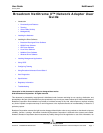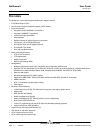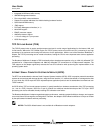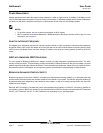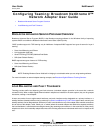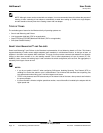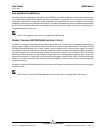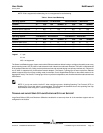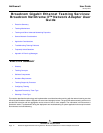
User Guide NetXtreme II
January 2010
Broadcom Corporation
Document ENGSRVT52-CDUM100-R Functionality and Features: Broadcom NetXtreme II™ Network Adapter User Guide Page 3
Functionality and Features: Broadcom
NetXtreme II™ Network Adapter User Guide
• Functional Description
•Features
FUNCTIONAL DESCRIPTION
The Broadcom NetXtreme II adapter is a new class of Gigabit Ethernet (GbE) and 10 GbE converged network interface
controller (C-NIC) that can simultaneously perform accelerated data networking and storage networking on a standard
Ethernet network. The C-NIC offers acceleration for all popular protocols used in the data center, such as:
• TCP Offload Engine (TOE) for accelerating TCP over 1 GbE, 2.5 GbE, and 10 GbE
• Internet Small Computer Systems Interface (iSCSI) offload for accelerating network storage access featuring
centralized boot functionality (iSCSI boot)
NOTE: Separate licences are required for all offloading technologies.
Enterprise networks that use multiple protocols and multiple network fabrics benefit from the C-NICs ability to combine data
communications, storage, and clustering over a single Ethernet fabric by boosting server CPU processing performance and
memory utilization while alleviating I/O bottlenecks.
The Broadcom NetXtreme II adapter includes a 10/100/1000-Mbps or 10-Gbps Ethernet MAC with both half-duplex and full-
duplex capability and a 10/100/1000-Mbps or 10-Gbps PHY. The transceiver is fully compatible with the IEEE 802.3 standard
for auto-negotiation of speed.
Using the Broadcom teaming software, you can split your network into virtual LANs (VLANs) as well as group multiple
network adapters together into teams to provide network load balancing and fault tolerance functionality. See Configuring
Teaming and Broadcom Gigabit Ethernet Teaming Services for detailed information about teaming. See Virtual LANs, for a
description of VLANs. See Configuring Teaming for instructions on configuring teaming and creating VLANs on Windows
operating systems.



